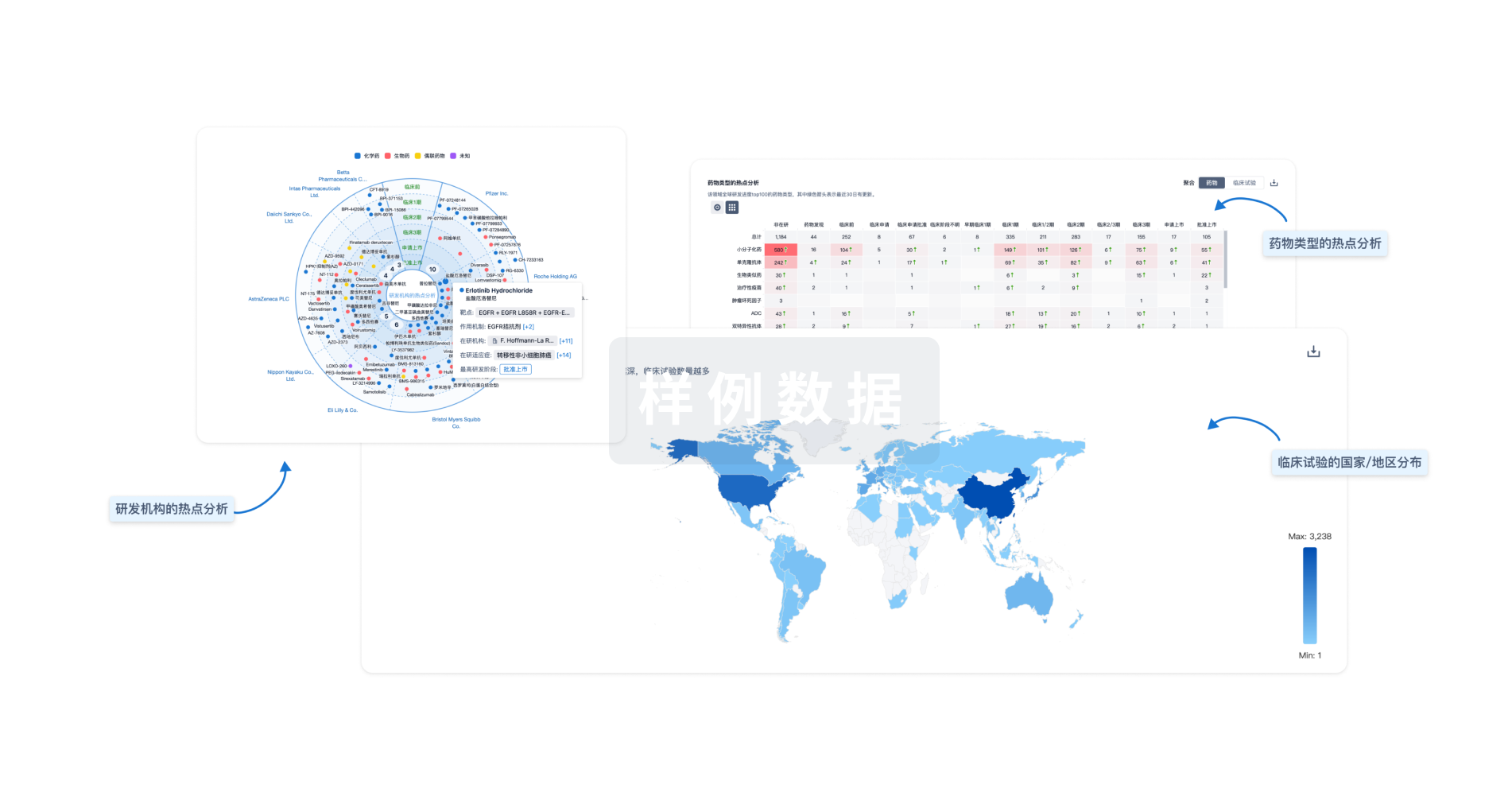预约演示
更新于:2025-05-07
Out-Of-Hospital Cardiac Arrest
院外心脏停搏
更新于:2025-05-07
基本信息
别名 Cardiac Arrest, Out-of-Hospital、Cardiac Arrests, Out-of-Hospital、Heart Arrest, Out-of-Hospital + [9] |
简介 Occurrence of heart arrest in an individual when there is no immediate access to medical personnel or equipment. |
关联
2
项与 院外心脏停搏 相关的药物作用机制 血红蛋白调节剂 |
最高研发阶段批准上市 |
首次获批国家/地区 美国 |
首次获批日期1999-12-23 |
靶点- |
作用机制- |
在研机构 |
最高研发阶段临床1期 |
首次获批国家/地区- |
首次获批日期1800-01-20 |
379
项与 院外心脏停搏 相关的临床试验NCT06251609
Naloxone for Opioid Associated Out of Hospital Cardiac Arrest
The investigator's long-term goal is to conduct Naloxone for Opioid Associated out of Hospital Cardiac Arrest (NOPACA), a randomized, double blind, controlled trial to determine the efficacy of naloxone vs. placebo in Opioid Associated out of Hospital Cardiac Arrest. The investigative team plan to randomize patients in OHCA to early naloxone administration vs. placebo after initial resuscitation and measure ROSC and survival. Challenges to designing NOPACA include uncertainty regarding: 1) the available pool of participants and number of EMS agencies needed to meet enrollment targets; 2) acceptability among patients, EMS and Emergency Medicine provider stakeholders, and 3) estimates of the study outcomes needed for sample size estimates. Toward obtaining the necessary information to design NOPACA, the investigators propose a pilot RCT of participants at high risk for OA-OHCA to verify a reasonable recruitment rate; treatment fidelity and acceptability; and adequate retention and measurement of outcomes at follow up. The investigators propose incorporating hypothesis testing of the feasibility outcomes to determine progression to a definitive trial.
开始日期2026-11-01 |
NCT06936917
Impact of Timing for Computed Tomography and Post-Resuscitation Care Sequence on Short-Term Outcomes in Out-of-Hospital Cardiac Arrest
This retrospective multicenter study investigates the association between the timing of computed tomography (CT) scans and short-term outcomes in adult non-traumatic out-of-hospital cardiac arrest (OHCA) patients who achieved return of spontaneous circulation (ROSC). The study includes cases from January 1, 2016, to August 31, 2024, across six branches of National Taiwan University Hospital. Data collected include demographics, Utstein variables, emergency department (ED) interventions and their timing. Primary outcomes are survival to admission, and 1-day, 3-day, and 7-day survival. Secondary outcomes focus on the timing and sequence of CT imaging and other interventions in relation to short-term prognosis and ED length of stay. The study aims to explore whether earlier CT utilization can improve outcomes in the post-resuscitation phase of care.
开始日期2025-05-01 |
NCT06922019
Exploring UK Ambulance Clinicians' Experiences of Attending Out of Hospital Cardiac Arrest (OHCA) Incidents Involving Children: A Mixed Methods Study
This research will explore ambulance clinicians' experiences of attending out of hospital cardiac arrest (OHCA) incidents involving children.
OHCA occurs when the heart stops beating. This is a time critical emergency that requires immediate treatment to maximise the changes of survival. OHCA affecting children is rare, but when it happens it is vital that paramedics and other ambulance clinicians can respond and deliver high quality care.
Because OHCA in children is rare, ambulance clinicians attend these incidents infrequently. Some clinicians may only ever attend this type of incident once in their career. These incidents are technically challenging for ambulance clinicians, and highly stressful. Evidence from other setting suggests that clinicians may be ill-prepared to manage these events.
This research aims to understand how OHCA incidents involving children are currently managed, and to explore the views and experiences of ambulance clinicians with respect to attending OHCA incidents involving children.
By learning from what is currently being done, and from clinicians' experiences, the research team aims to develop recommendations for how the response to these patients, and the support provided to ambulance clinicians, could be improved.
The research team will review the records of patients under the age of 18 who have been treated for OHCA by one ambulance service over a four-year period. Data will be collected from these records to allow the care delivered to be compared to international guidelines, and to explore what factors might influence the delivery of this care.
The research will also involve a survey of ambulance clinicians working across the UK to understand their experiences, and how prepared they feel to attend these incidents. Finally, the research team will undertake interviews with clinicians who have been involved in the management of a child with OHCA and focus group discussions with specialist clinicians to allow us to learn from their experiences.
OHCA occurs when the heart stops beating. This is a time critical emergency that requires immediate treatment to maximise the changes of survival. OHCA affecting children is rare, but when it happens it is vital that paramedics and other ambulance clinicians can respond and deliver high quality care.
Because OHCA in children is rare, ambulance clinicians attend these incidents infrequently. Some clinicians may only ever attend this type of incident once in their career. These incidents are technically challenging for ambulance clinicians, and highly stressful. Evidence from other setting suggests that clinicians may be ill-prepared to manage these events.
This research aims to understand how OHCA incidents involving children are currently managed, and to explore the views and experiences of ambulance clinicians with respect to attending OHCA incidents involving children.
By learning from what is currently being done, and from clinicians' experiences, the research team aims to develop recommendations for how the response to these patients, and the support provided to ambulance clinicians, could be improved.
The research team will review the records of patients under the age of 18 who have been treated for OHCA by one ambulance service over a four-year period. Data will be collected from these records to allow the care delivered to be compared to international guidelines, and to explore what factors might influence the delivery of this care.
The research will also involve a survey of ambulance clinicians working across the UK to understand their experiences, and how prepared they feel to attend these incidents. Finally, the research team will undertake interviews with clinicians who have been involved in the management of a child with OHCA and focus group discussions with specialist clinicians to allow us to learn from their experiences.
开始日期2025-05-01 |
申办/合作机构 |
100 项与 院外心脏停搏 相关的临床结果
登录后查看更多信息
100 项与 院外心脏停搏 相关的转化医学
登录后查看更多信息
0 项与 院外心脏停搏 相关的专利(医药)
登录后查看更多信息
8,104
项与 院外心脏停搏 相关的文献(医药)2025-09-01·Heart & Lung
Out-of-hospital cardiac arrest: A 10-year analysis of survival and neurological outcomes
Article
作者: Rajsic, Sasa ; Krösbacher, Armin ; Schausberger, Lukas ; Schwaiger, Daniel ; Baubin, Michael ; Eckhardt, Christine
2025-07-01·The American Journal of Emergency Medicine
Waveform conversion as a prognostic factor of poor prognosis in patients undergoing extracorporeal cardiopulmonary resuscitation
Article
作者: Kuroda, Yasuhiro ; Hifumi, Toru ; Inoue, Akihiko ; Inoue, Ken ; Sakamoto, Tetsuya ; Kato, Taichi ; Shibahashi, Keita ; Sugiyama, Kazuhiro
2025-07-01·The American Journal of Emergency Medicine
External validation of three scores for predicting prehospital return of spontaneous circulation in out-of-hospital cardiac arrest
Article
作者: Huang, Chien-Tai ; Huang, Edward Pei-Chuan ; Huang, Chun-Hsiang ; Fan, Cheng-Yi ; Lien, Chun-Ju ; Chang, Wei-Tien ; Chen, Ching-Yu ; Huang, Sih-Shiang ; Ho, Yi-Ju ; Sung, Chih-Wei ; Chen, Chi-Hsin
15
项与 院外心脏停搏 相关的新闻(医药)2025-04-02
WEDNESDAY, April 2, 2025 -- Despite increased participation in U.S. long-distance running races,
cardiac arrest
incidence remains stable, according to a study published online March 30 in the
Journal of the American Medical Association
to coincide with the annual meeting of the American College of Cardiology, held from March 29 to 31 in Chicago.
Jonathan H. Kim, M.D., from the Emory Clinical Cardiovascular Research Institute at the Emory School of Medicine in Atlanta, and colleagues estimated long-distance race-related cardiac arrest incidence and outcomes among 29.3 million U.S. marathon and half-marathon finishers (2010 through 2023).
The researchers found that compared with 2000 to 2009, cardiac arrest incidence remained unchanged in the contemporary period (incidence rate, 0.54 versus 0.60 per 100,000 participants). The more recent period had significant declines in cardiac death incidence (0.20 versus 0.39 per 100,000) and case fatality rate (34 versus 71 percent). Men had more cardiac arrests than women (1.12 versus 0.19 per 100,000), and cardiac arrests remained more common during marathons (1.04 per 100,000) versus half-marathons (0.47 per 100,000). The etiology of cardiac arrest was available in 52 percent of cases, and coronary artery disease was the most common cause (40 percent). Hypertrophic cardiomyopathy was an uncommon cause of cardiac arrest (7 percent). Survival was associated with decreased cardiopulmonary resuscitation time and an initial ventricular tachyarrhythmia rhythm.
"Effective emergency action planning during marathons and half-marathons, inclusive of immediate access to defibrillation, has likely led to significant improvements in cardiac arrest outcomes, equivalent to settings with publicly accessible automated external defibrillators," the authors write.
Several authors disclosed ties to the sports and athletic industry.
Abstract/Full Text
Editorial (subscription or payment may be required)
More Information
Whatever your topic of interest,
subscribe to our newsletters
to get the best of Drugs.com in your inbox.
AHA会议
2025-03-31
MONDAY, March 31, 2025 -- For patients with out-of-hospital cardiac arrest (OHCA), the proportion receiving layperson bystander life support (BLS) has increased, but a critical factor in determining survival and long-term outcomes is how quickly cardiopulmonary resuscitation (CPR) is initiated, according to a study presented at the annual ESC Acute CardioVascular Care congress, held from March 14 to 15 in Florence, Italy.
Aneta Aleksova, M.D., from the University of Trieste in Italy, and colleagues examined whether the percentage of layperson initial rescuers has changed over time in the setting of OHCA during ST-elevation myocardial infarction (STEMI). Data were included for 172 patients with OHCA among 3,315 with STEMI admitted in Italy between 2003 and 2024.
The researchers found that 26 percent of the patients with OHCA were initially rescued by a layperson. The percentage of layperson BLS increased constantly, from 26 percent in 2003-2007 to 69 percent in 2020-2024. The median time to return of spontaneous circulation (ROSC) was 10 minutes. Compared with emergency medical service (EMS) CPR, longer ROSC was seen with layperson-initiated BLS (20 versus 5 minutes). Patients who received layperson BLS more frequently underwent endotracheal intubation than those receiving EMS CPR (91 versus 65 percent). Overall, 44 patients died during their hospital stay, with no difference seen by type of initial rescuer. On logistic regression analysis and after correction for rescuer type, predictors of in-hospital mortality included worse left ventricular ejection fraction, longer time to ROSC, and older age (odds ratios, 1.38, 1.38, and 1.46, respectively). Long-term outcome did not differ according to initial rescuer.
"Our data highlights the importance of immediate resuscitation and underlines the importance to promote population awareness and BLS training to further improve survival after OHCA," the authors write.
Press Release
More Information
Whatever your topic of interest,
subscribe to our newsletters
to get the best of Drugs.com in your inbox.
AHA会议
2025-02-25
TUESDAY, Feb. 25, 2025 -- A new study has found no evidence that COVID vaccines increase the risk of sudden
cardiac arrest
in young athletes, despite numerous claims that circulated during the pandemic.
The six-year study — published Feb. 24 in
JAMA Network Open
— compared sudden
cardiac arrests
and deaths among competitive athletes aged 10 and older before and during the pandemic. Cardiac arrest is when the heart suddenly stops beating.
"This cohort study found no increase in [sudden cardiac arrest or sudden cardiac death] in young competitive athletes in the US during the COVID-19 pandemic, suggeting that reports asserting otherwise were overestimating the cardiovascular risk of COVID-19 infection, vaccination, and myocarditis," researchers wrote.
They found 203 cases from 2017 to 2019 and 184 cases from 2020 to 2022, showing no spike after vaccines became available.
“I think the results speak for themselves. There was really no change in the overall frequency of sudden cardiac arrest and death in young athletes across the U.S.,” study author
Dr. Jonathan Drezner
, director of the Center for Sports Cardiology at the University of Washington, told
NBC News.
The study challenges misinformation spread during the pandemic, including claims that COVID vaccines caused athletes to collapse.
In 2021, a viral video set to ominous music and posted on a website of an internet talk show founded by anti-vaccine activist Del Bigtree showed athletes collapsing during games,
NBC News
reported.
The Buffalo Bills' Damar Hamlin’s cardiac arrest in 2023 and Bronny James' collapse later that year fueled more speculation.
Experts stress that these claims were never based on real science.
"[This study should] make it clear to everyone, even naysayers, that Covid was not a particularly difficult virus for young, healthy people, and that the vaccine did much more good than harm,”
Dr. Aaron Baggish
, a cardiologist at the Massachusetts General Hospital Heart Center, who was not involved in the study, said.
Cardiac arrest in young athletes is rare and is usually linked to underlying heart conditions like genetic disorders or birth defects, rather than vaccines or viruses.
The study noted that 30% of cardiac arrests happened outside exercise.
Dr. Neel Chokshi
, medical director of Penn Medicine’s Sports Cardiology and Fitness Program, called that unsurprising.
“We’ve noticed that oftentimes ... it’s not during actual exercise or strenuous activity, but it can happen at any time,” said Chokshi, who was not involved in the study.
Whatever your topic of interest,
subscribe to our newsletters
to get the best of Drugs.com in your inbox.
疫苗临床研究AHA会议
分析
对领域进行一次全面的分析。
登录
或

Eureka LS:
全新生物医药AI Agent 覆盖科研全链路,让突破性发现快人一步
立即开始免费试用!
智慧芽新药情报库是智慧芽专为生命科学人士构建的基于AI的创新药情报平台,助您全方位提升您的研发与决策效率。
立即开始数据试用!
智慧芽新药库数据也通过智慧芽数据服务平台,以API或者数据包形式对外开放,助您更加充分利用智慧芽新药情报信息。
生物序列数据库
生物药研发创新
免费使用
化学结构数据库
小分子化药研发创新
免费使用





